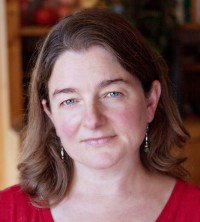Common language, common prayer
In the last year, my church—St. George Episcopal in Leadville, Colorado—has gained a number of Latino and Latina members. Last week we held our first ever bilingual vestry meeting, at which we quickly realized that the language barrier itself was not our primary challenge. We found ourselves face to face with different understandings about Eucharist, the Nicene Creed, worship, sacrament, and the behavior of children in church. And this after a year of shared bilingual liturgy.
Perhaps by grace alone, the meeting was not contentious. We laughed as we recognized the difficulty of what we are attempting. How are we going to find both common language and common understanding? We had to admit that it was no wonder that every church around us is still neatly divided into separate Spanish- and English-speaking congregations.
At one point, Father César, from El Salvador, put his head in his hands as he watched the fraying of what he sees as the threads that hold us together. “You must believe in the Creed,” he said. “You don’t have to believe anything else in the Book of Common Prayer so long as you embrace the Creed.”
“Is it enough,” I answered, “if I consent to be in a deep, long-lasting, and meaningful conversation with the Creed?” Clearly, it was not enough.
And yet, as one vestry member reminded us, we were engaged in an important Christ-like activity. We were crossing cultural and spiritual boundaries. We were stepping toward one another with the hope of overcoming divides that are deep-rooted in our community.
“I do fear the moment,” our English-speaking priest said, “when we decide this is too difficult, that we can’t do it anymore and we don’t want to try. But I think what we are attempting is worth the struggle.”






